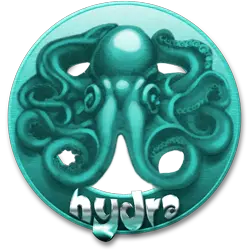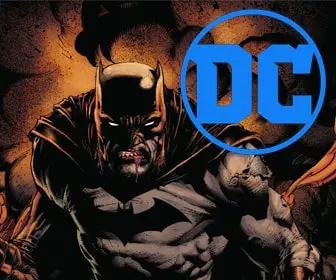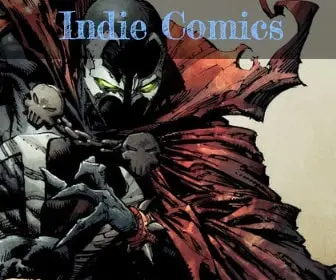
From Timely to Titans: Marvel Comics’ Rise
Comic fans around the world know Marvel Comics as a powerhouse, but its story starts in a simpler place. Back in 1939, the company was called Timely Comics, publishing fun adventures for kids. Then, in the 1960s, things got exciting! Stan Lee, a writer full of ideas, and Jack Kirby, a talented artist with a big imagination, joined the team. Together, they didn’t just create amazing characters; they changed the way comic books were made altogether.
Timely Comics
Timely Comics, initially known as Timely Publications, was a significant precursor to the iconic Marvel Comics. Founded in 1939 by pulp magazine publisher Martin Goodman, Timely Comics emerged during the Golden Age of Comic Books, a period marked by the debut of many superhero characters. The company’s first publication, “Marvel Comics” #1, introduced characters such as the Human Torch and the Sub-Mariner, who quickly became popular among readers.
Throughout the 1940s, Timely Comics continued to expand its roster of superheroes, with characters like Captain America, created by Joe Simon and Jack Kirby, becoming emblematic of the era. Captain America, in particular, resonated with readers for his patriotic theme during World War II, famously depicted punching Adolf Hitler on the cover of his first issue. However, as World War II came to an end, the popularity of superheroes waned, prompting Timely Comics to diversify its offerings into other genres such as romance, horror, and westerns.
Atlas Comics
In the 1950s, the company underwent several name changes, eventually settling on Atlas Comics. This era saw a decline in the comic book industry, partly due to the rise of television and the scrutiny of comics’ content by the government and public, culminating in the establishment of the Comics Code Authority. The superhero genre experienced a significant downturn, leading Atlas Comics to focus more on other genres.
Marvel Comics
The transformation into Marvel Comics began in the late 1950s and early 1960s under the leadership of writer and editor Stan Lee, alongside artists such as Jack Kirby and Steve Ditko. This period, known as the Silver Age of Comic Books, marked the revival of the superhero genre. Marvel differentiated itself by creating characters with more complex personalities and relatable problems, such as the Fantastic Four, Spider-Man, the X-Men, and the Hulk. These characters were often depicted as flawed individuals dealing with real-world issues, a stark contrast to the infallible heroes of the past.
The success of these new characters and the innovative storytelling approach solidified Marvel’s place in the comic book industry. The company officially became Marvel Comics in 1961, coinciding with the launch of “The Fantastic Four” #1. Under the Marvel banner, the company continued to introduce iconic characters and storylines that have become deeply ingrained in popular culture. Marvel’s evolution from Timely Comics to a powerhouse in the entertainment industry is a testament to its adaptability and creativity in storytelling.
Teaming Up for Comic Book Magic: The Marvel Method
Stan Lee and Jack Kirby weren’t your typical comic book dream team. They ditched the usual writer-artist routine and cooked up a brand new way to create comics! Instead of Lee writing a whole script beforehand, they’d brainstorm a story together. Lee would jot down the main ideas for the plot and characters, then Kirby would take the reins.
Here’s where things got interesting: Kirby wasn’t just about drawing the pictures. He would also figure out how the story flowed from panel to panel, adding his own creative spark to the mix. Once Kirby had the artwork finalized, Lee would jump back in, writing the dialogue that breathed life into the characters and story. This teamwork, dubbed the Marvel Method, was a game-changer. It allowed them to pump out comics faster and gave the artists more freedom to express themselves, which ultimately led to even more exciting stories.
Superheroes You Can Relate To: A New Breed for a New Age
The concept of the “Marvel Superhero” revolutionized the comic book industry. Marvel Comics, once known as Timely Comics, introduced a new type of hero in the 1960s. These heroes were different from the perfect, untouchable characters of the past. Marvel’s superheroes were flawed and relatable. They had personal problems just like regular people.
One famous example is Spider-Man. He is a young man named Peter Parker who gains superpowers. But he also has to deal with everyday issues like school, money, and relationships. This made Spider-Man very popular. Readers could see themselves in him.
Another example is the X-Men. They are a group of mutants with special powers. But they are often feared and hated by society because they are different. This story mirrors real-world issues of prejudice and acceptance.
Marvel’s approach to superheroes was new and exciting. It changed how people saw comic book characters. These heroes were not just about fighting villains. They also had to face their own inner struggles. This made their stories more interesting and meaningful.
In summary, the “Marvel Superhero” is a hero who is not perfect. They have flaws and personal challenges. This makes them more relatable and appealing to readers. Marvel Comics became very successful with this approach. It helped create some of the most beloved characters in comic book history.
Beyond the Fights: Comics That Reflected a Changing World
Stan Lee and Jack Kirby’s superheroes were more than just guys and gals in tights. Sure, they battled bad guys, but their stories also tackled the big issues of the 1960s. Spider-Man, for instance, wasn’t just swinging around – he was also a teenager dealing with schoolwork, bullies, and the weight of responsibility, just like many readers. The Fantastic Four, a family with different personalities, showed the importance of teamwork and getting along even when you disagree. The X-Men hit even closer to home. They were like any group facing prejudice because of their differences, whether it was race, religion, or even just being unique. By reflecting these real-world issues, Marvel comics connected with a new generation of readers who saw their own struggles mirrored in the stories. It wasn’t just about punching villains anymore; it was about facing challenges with courage and accepting others, no matter how different they might seem.
A Lasting Impact: The Legacy of Marvel Comics
The teamwork of Stan Lee and Jack Kirby, along with the iconic characters they created, left a permanent mark on the comic book world. The “Marvel Method” they pioneered sped up comic creation and gave artists more freedom, leading to a wave of fresh and exciting stories. More importantly, they broke the mold with relatable superheroes. No longer were heroes perfect beings; they were ordinary people with flaws and problems that readers could identify with. This innovation resonated with a new generation, making Marvel Comics a pop culture powerhouse. Today, Marvel characters dominate movie screens and continue to inspire fans around the world. Their legacy is a testament to the power of imagination, teamwork, and creating heroes that reflect the world we live in.
















